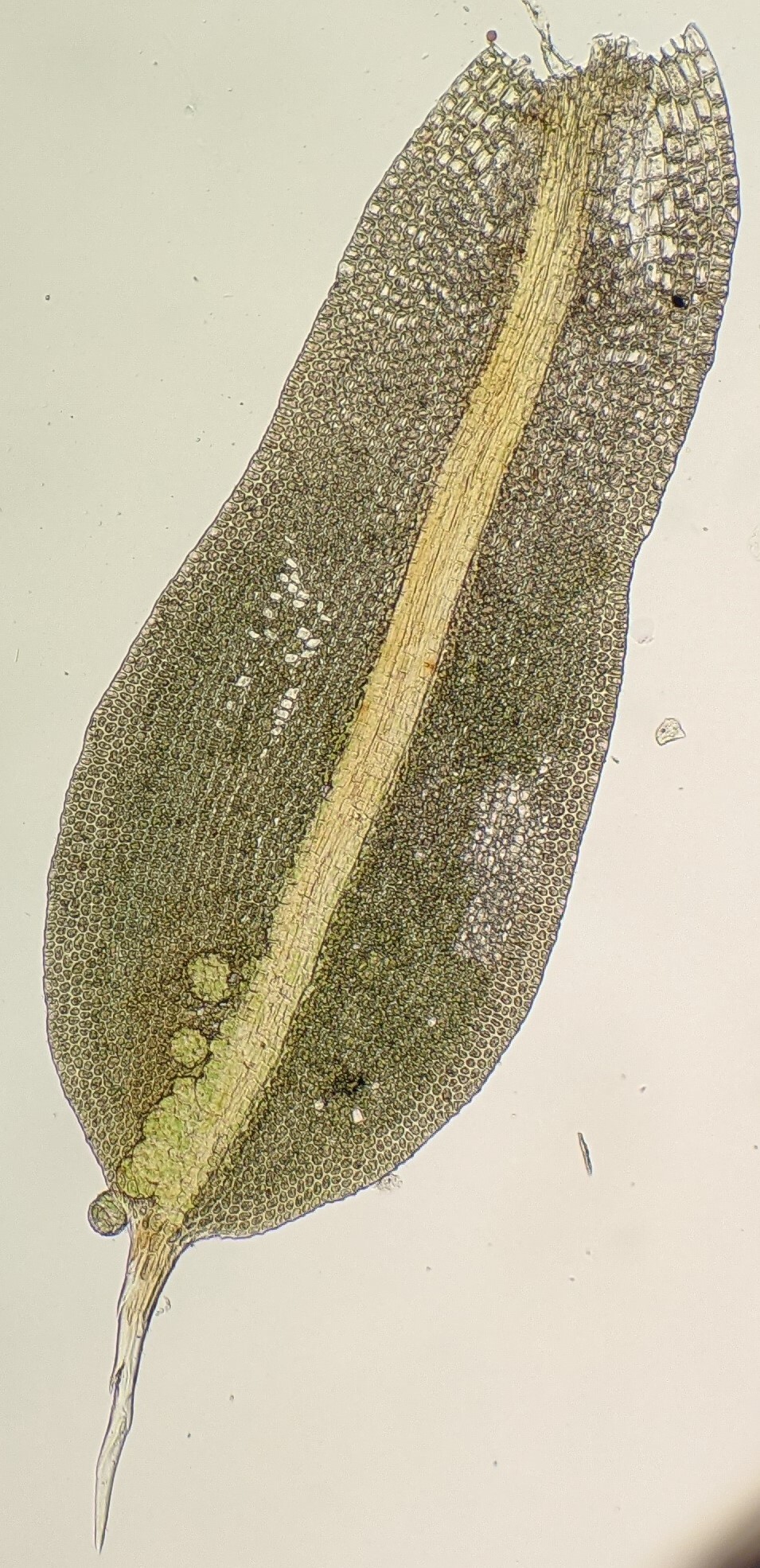Syntrichia papillosa
(Wilson) Jur.Dioicous. Asexual reproduction regularly by broadly elliptic or rotund gemmae. Tufts on rough bark of trees or shrubs. Stems 1–8 mm tall. Leaves erect to wide-spreading when moist, incurved and slightly twisted when dry, broadly oblong-spathulate or obovate-spathulate, (1.5–) 2–3 mm long, 0.75–1.25 mm wide, concave; apex acute to obtuse; costa bearing gemmae toward the apex adaxially, excurrent in a short or long arista; arista denticulate or smooth, yellowish or hyaline, 1/8–1/5 leaf length; margin somewhat involute toward apex; laminal cells in apical half broadly elliptic, hexagonal or subrotund, isodiametric, 14–22 μm wide, papillose; basal cells oblong, gradually differentiated. Seta 6.5–8.5 mm long, reddish brown, twisted to right near capsule. Capsule erect, cylindric, 1.3–2.5 mm long, reddish brown. Peristome of 32 teeth, spirally twisted. Operculum conic, 0.9–1.9 mm long.
LoM, MuM, Wim, GleP, VVP, VRiv, MuF, GipP, OtP, WaP, Gold, CVU, GGr, DunT, NIS, EGL, EGU, WPro, HSF, HNF, OtR. Widespread throughout the state in dry sclerophyll forest and woodland, mallee or on exotic trees around townships, and also in coastal vegetation. Also WA, SA, QLD, NSW, ACT, Tas and Lord Howe Island. New Zealand, southern Africa, southern South America, Brazil, Colombia Ecuador, Mexico, USA, Canada and Europe.
 Spinning
Spinning
